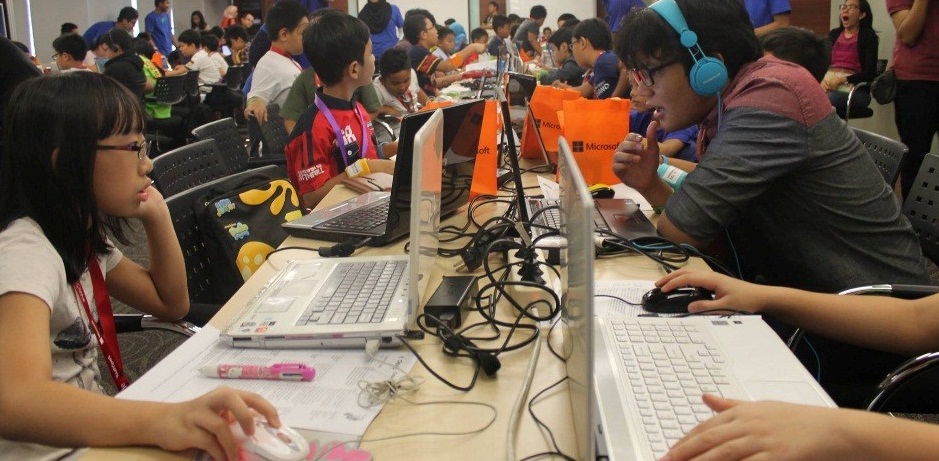Children get Creative with Coding for Environmental Awareness
var post id: = ♻ facebook → post text("", "hello from TouchDevelop!")
To many of us, the line above appears to be gibberish but there is a group of Indonesian children who would know it is a visual programming language, Touch Develop.
At a coding workshop hosted in Jakarta by Microsoft Indonesia and local programming course provider Clevio Coder Camp, children between six and 12 years old learnt visual programming languages to enter a mobile app design competition Imagine Cup Earth. A collaboration between Microsoft and the US government agency for civilian space programme and aeronautics and aerospace research NASA, the global online competition is a platform to showcase mobile apps to raise environmental awareness.
For two Saturdays, over 100 children from Jakarta and its surrounding region gathered at Microsoft Indonesia to learn about NASA earth science missions and work on their own solutions. Taken through presentations on the NASA projects ‘Prosperity Shining’ and ‘Zebras Without Borders’, they were captivated by how earth science data is compiled and utilised. The workshop instructors then demonstrated the fundamentals of Touch Develop, before getting the children started on developing games or simulations related to the projects.
[caption id="attachment_13322" align="aligncenter" width="788"] A happy occasion for the 120 young students who successfully coded their very own apps inspired by the work of NASA[/caption]
A happy occasion for the 120 young students who successfully coded their very own apps inspired by the work of NASA[/caption]
Personal laptops in hand and brows furrowed in concentration, the participants spent most of the first session familiarising themselves with Touch Develop. Some of the younger children decided to use the simplified visual programming tool, Kodu Game Lab, and excitedly explored various earth science topics for their app. According to the instructors, their limitless enthusiasm to learn was “infectious, and definitely rewarding to see”.
At the second session, the students were eager to start bringing their app ideas to life. When the day ended, most participants had finished troubleshooting their issues with their mentors, and were busy adding the final touches to their apps before uploading them for submission.
[caption id="attachment_13312" align="aligncenter" width="782"] Participants focused on getting their apps up and running[/caption]
Participants focused on getting their apps up and running[/caption]
“I was really impressed by the interesting and well-thought out apps by the others. For instance, there was a simulation app on earth lights, where you can manipulate different environmental factors to see how they affect urban development and the brightness of city lights in different regions of earth. One app on zebra migration allows players to adjust temperature and rainfall to create the ideal environment for migration,” said a student, Bintang Dhiya Abiyyusalam, who used Kodu.
The youngest participant, six-year-old Adelyne Koe, was so inspired by another NASA project where data from fishing boats is used to address the problem of dwindling tuna populations, she created a game about saving tuna from greedy fishermen.
In just two days, the children came up with such thoughtful and well-designed apps. That sure inspires us to work on our own coding skills! Looking forward to a year of more coding workshops!